In 1996, there were an estimated two million personal watercraft sold worldwide. That number is gargantuan when you consider that last year saw the sales of roughly 29,000-plus units. Within seventeen years, our industry has rapidly desiccated to near terminal levels. During this decline, we’ve lost two major manufacturers – Polaris and Honda – and hundreds of dealerships. Of the three manufacturers who remain – Kawasaki, Yamaha and Sea-Doo – the division of market share is radically imbalanced.

To the outsider, the personal watercraft industry is woefully ill. Public interest appears to be minimal; vehicle sales are a mere trickle of a once torrential river; and club and sanctioned racing body memberships are paltry.
Yet, in light of all of this bad news, there’s never been a better time to be a personal watercraft enthusiast. Modern safety features have earned the acclaim of the US Coast Guard, boating commissions and regulatory boards. Environmental groups have relinquished their attacks, and even have began employing watercraft themselves.
The build quality of today’s runabouts exceed the standards of full-sized sport boats from only a few years earlier. The performance offered from the factory and dealer floors are equal to, if not superior to the race-bred machines that earned National and World Championships only a few years earlier.
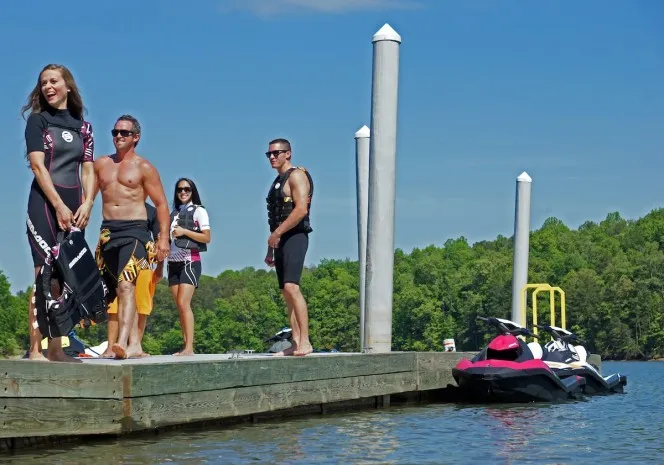
Yet, why aren’t dealers flocked each Spring with new and returning customers? The answer won’t surprise you.
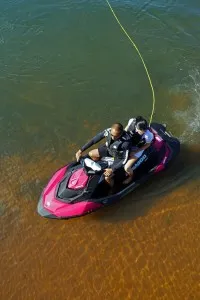
Over a decade ago, strides were made by manufacturers to appeal to a more mature market in an effort to shed its poor public image. Prior to the large four-stroke runabouts comprising much of the lineups these days, personal watercraft were widely believed to be a pestilence, a swarming mass of irresponsible, intoxicated and inexperienced gnats buzzing around local lakes and waterways.
By repackaging their products as stable, sophisticated and refined machines rather than rowdy, raucous and carefree, manufacturers felt they could kill two birds with one stone – improve public relations and reach a more affluent age group. The problem with this method of merchandising proved extensive.
Although older buyers have the expendable income to spend on a $18,000 runabout equipped cruise control, automated suspended seats and a sound system, they also exhibit low turnover. Frankly put, they typically don’t ruin their stuff. Additionally, the quantity of hours spent riding is lower, thus requiring less maintenance and upkeep as well.
Conversely, youthful riders habitually ride longer, more aggressively and nearly year-round. They also are more prone to want to “trade up” to a newer model, even when improvements over their current model are negligible. Moreover, youthful buyers are more likely to modify or personalize their craft thus encouraging aftermarket growth.
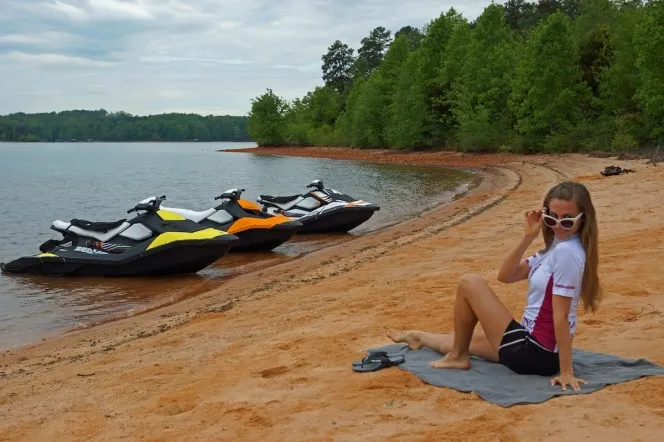
It was only until late this Summer that one manufacturer did something to address this. Sea-Doo’s introduction of the Spark is not a marketing gimmick or short-term ploy. It’s a tectonic shift in how the personal watercraft industry should operate.
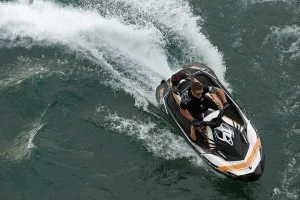
Arguably, every facet of executing a concerted effort towards a virgin market of youthful buyers has been addressed. Each advancement employed by Sea-Doo to reduce costs overlaps into other categories.
To reduce weight, a new PolyTec recyclable material was developed in addition to the uniquely open ExcoSkel design. This not only reduced gross weight down to 405-pounds but provided improved structural integrity.
The modular component construction not only cut assembly time and weight, but radically opens up the Spark to ease of maintenance and modification. Tuners can remove the top deck with the turn of a few dozen screws. In fact, it’s simplicity is one of its greatest attractors. A color change can be done with the swap of three panels, and damaged portions are as easily replaced.
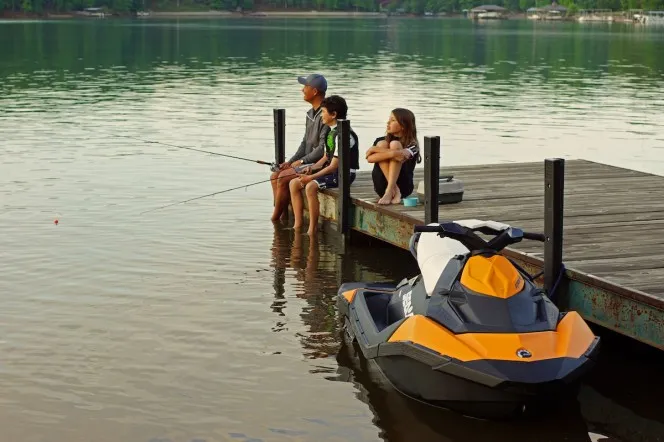
Employing Sea-Doo’s ACE 900cc four-stroke plant – found previously in Can-Am snowmobiles – provided buyers a choice of the 50 and 90 horsepower configurations, access to an already established aftermarket of ECU tuners, and keeps the PWC accessible in two-stroke restricted lakes. Its quiet operation and ability to run on 87 octane pump gas only adds to its broad appeal.
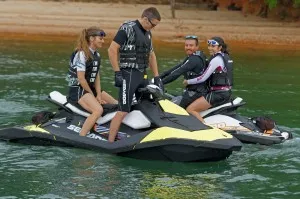
When first announced, production of the Spark was already well underway, with units boxed and halfway to South America and Australia. Undoubtedly, Sea-Doo knew that a craft priced below $5,000 would be greedily accepted, and well received it has.
But what the potential lies within the Spark far surpasses that of a much needed boost in dealer sales. It’s the philosophy behind the Spark that can cause a tectonic-level shift in the personal watercraft industry. Sea-Doo’s open-arm embrace of a demographic otherwise ignored for nearly 20 years is almost completely alien to the likes of Kawasaki, who at 7-percent of the market share, is in dire need of wider appeal.
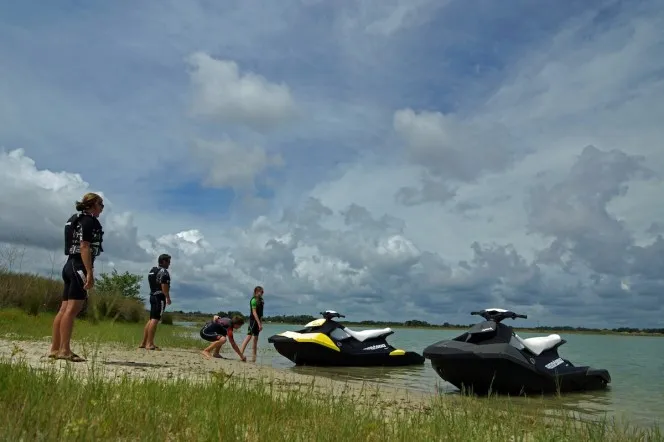
Completely glossing over any refresh of the STX-15F or even the naturally-aspirated Ultra LX, Kawasaki doubled-down on a group already saturated with fully-loaded and heavily optioned watercraft. Whether this “damn the torpedoes” position plays out in Kawasaki’s favor remains to be seen, but it does strike as completely antithetical to Sea-Doo’s maneuvering.
Yamaha’s VX line of affordable performance is a fair middle ground but is too cautious in its delivery – that is, save for the VXR. The “big motor in a little PWC” combination proved a winning combination for hot doggers and racers alike. The Spark though, is something completely different. And it’s that departure from the status quo that is likely to prove the next evolutionary step in our industry.





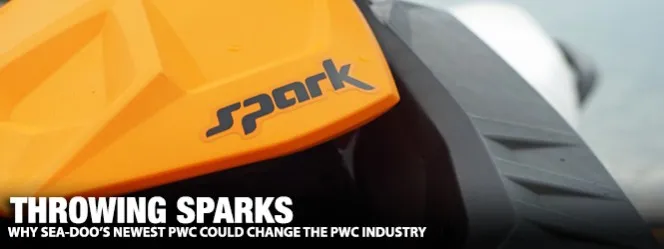
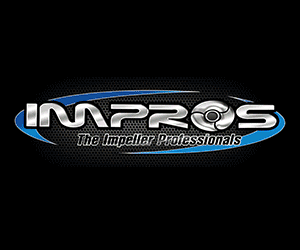
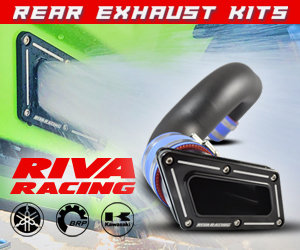

[…] new Sea-Doo Spark has been making waves in the industry since its recent release. It’s big debut went down at […]
Thanks for a great write-up on the Spark. I saw it on the factory website just a couple days ago and think they will be indeed a hot seller. Certainly nothing else in the marketplace can compete on price. We will see these at cottage docks in every small lake and river within a year…. like mosquitos.
Most PWCs on the market now are either over powered or over featured for what their application is. Reminds me of all the SUV’s in the city – swarms of off-road vehicle that has never seen dirt.
Casual users will find that, although at 90 HP the Spark will pull a skier, it will be a scary ride for the driver/spotter. I find pulling ski/board on my Yamaha HO will nearly turn me sideways when the skier pulls out on the side, and I am anchoring in with 900 lbs of boat !!! Other than the deficit in towing, I think they will be a great machine.
Not for me though – I like doing long distance rides, and the weight and smoothness of my heavy Yamaha takes me through lots of open water, big waves, and 100+ mile days and I can still bend my knees and feel my a$$ when I arrive at my destination.
Live to ride,stand ups in the 80’s in Calif. now sit downs in Min. Miss. River,Duluth/ N. Shore love it all.
Live to ride,stand ups in the 80’s in Calif. now sit downs in Min. Miss. River,Duluth/ N. Shore love it all.The spark is great pwc . It has it’s place I would own one and add it to the 3 pwc I have .
why do people ingore benelli, they still make watercraft under the name belassi, thats 4 oems not three, how could you ignore benelli, they have won more world titles in there 9 years of exsistance then any other watercraft
[…] Click here to read the full story. […]
[…] suspension (iBR, iTC and iS, respectively), to terminating its sport boat line to the recent launch of the Spark, the company has been nothing less than daring – and if history teaches us anything – […]
[…] There’s nothing like starting off of the right foot, and at the Miami Boat Show Sea-Doo did exactly that, receiving the National Marine Manufacturers Association (NMMA) Innovation Award – for a sixth time – for the all new Sea-Doo Spark watercraft. […]
[…] year ago, word leaked that Sea-Doo was building a new lightweight entry-level runabout: the Spark. Since then and its worldwide public reveal last September, the Spark has breached buying […]
[…] boy, does Yamaha hate the new Sea-Doo Spark. And we’re not talking like you might hate mayonnaise or small yappy dogs kind of hate, […]
Finally, someone in the boating world gets it!
Some of your reasons for the collapse of the boating / PWC market are correct, but you need to add that at $4 a gallon, users are not in the mood for spending $40 per day , per PWC to go out for the day. Add $500 a year for insurance and $400 a year for maintenance and it is onerous. My first PWC was a Yamaha Waverunner III with 50hp and 420 pounds. Lots of fun. When I bought the 850 pound Kawasaki STX-12F (2) they were heavy, gas hogs, and expensive to maintain. In the Northeast I got to use them a half dozen times a summer at an average cost of $250 per use not including the purchase price. This killed boating overall, not just PWC’s. We need lighter, fuel efficient, sensibly powered boats/PWC’s. The Spark is a step in the right direction!